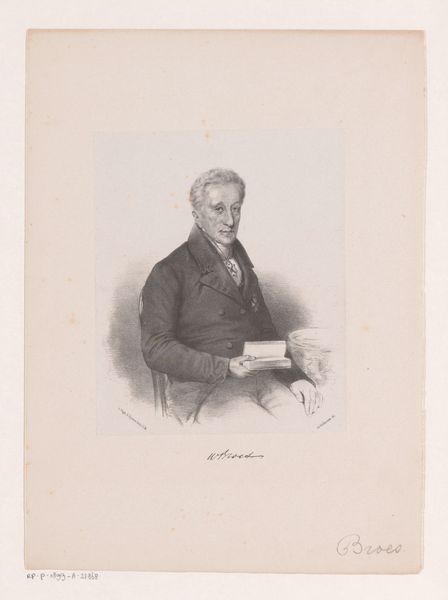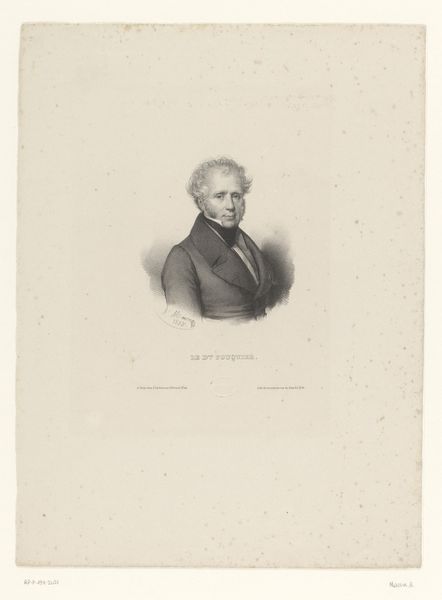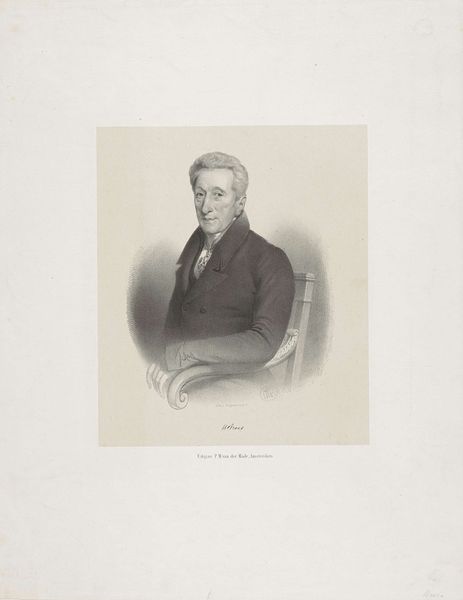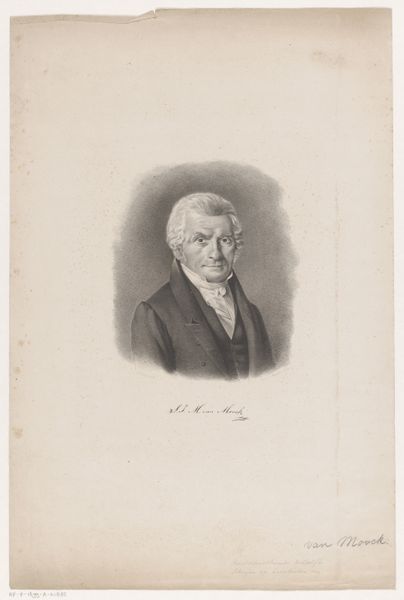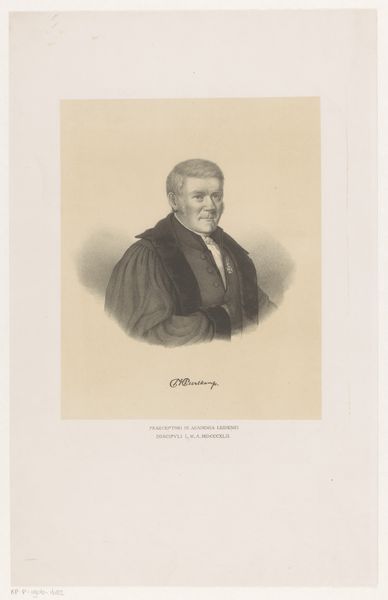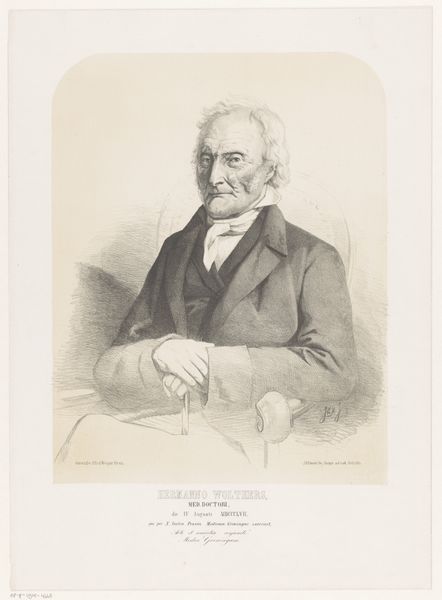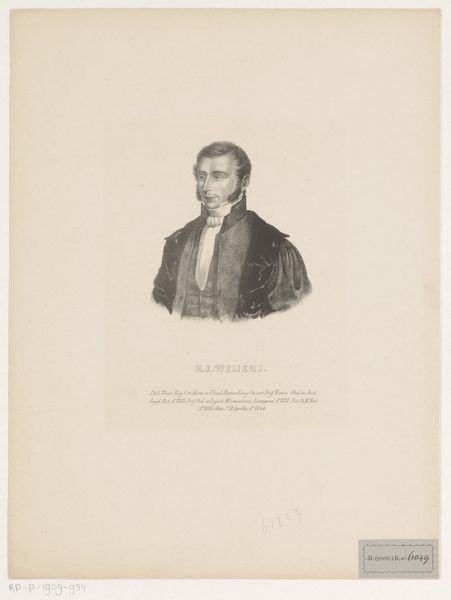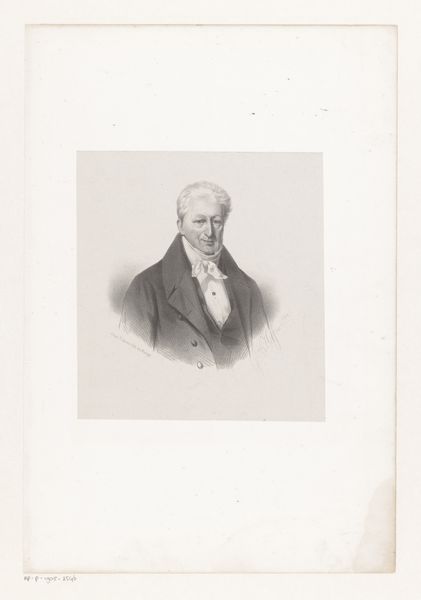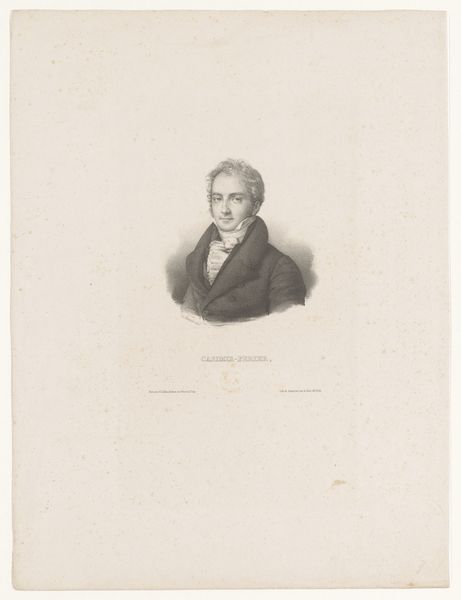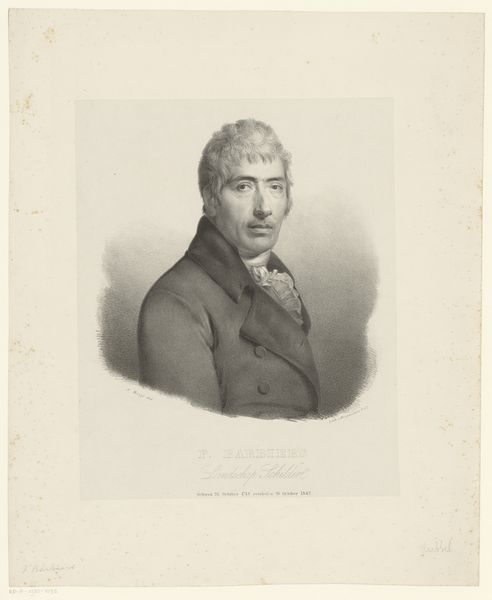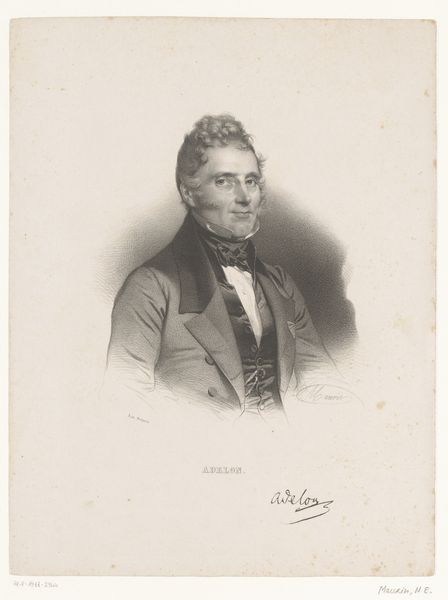
drawing, pencil
#
portrait
#
pencil drawn
#
drawing
#
pencil sketch
#
pencil drawing
#
romanticism
#
pencil
#
portrait drawing
#
academic-art
Dimensions: height 429 mm, width 293 mm
Copyright: Rijks Museum: Open Domain
Émilien Desmaisons created this portrait of William Lamb using lithography, a printmaking technique that relies on the chemical repulsion of oil and water. The image’s subtle gradations, achieved through delicate applications of greasy crayon to a limestone or metal plate, result in a soft, almost photographic quality. This process allowed for relatively quick and inexpensive reproduction, making portraits like this accessible to a wider audience than traditional painted portraits. Lithography’s rise coincided with the burgeoning middle class and their desire for representation and status. The very act of creating such a print involves a division of labor. While Desmaisons conceived the image, skilled printers would have been responsible for inking the stone, and running it through a press. Consider that for every impression pulled, someone was engaged in the physical labor of production. By considering lithography's material and social dimensions, we see how art becomes intertwined with the broader economic landscape, challenging the notion of the artist as a solitary genius, and highlighting the collaborative nature of artistic creation.
Comments
No comments
Be the first to comment and join the conversation on the ultimate creative platform.
